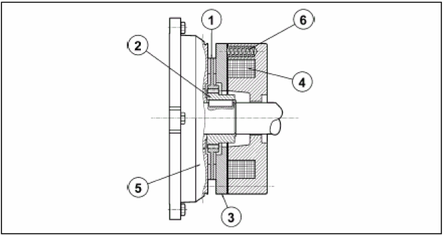Modern Braking Control Braking System Management
페이지 정보

본문
The automotive industry has witnessed significant progress over the last several years, aiming for better performance and reliability. One such significant innovation has been the widespread implementation of electronic braking systems including cars, buses, and trucks, including buses, trucks, and motorcycles.
Electromagnetic braking systems harness the power of electromagnetic energy to decelerate or bring to a halt vehicles with an efficient and reliable means of braking.
 Electronic braking systems function by creating an opposing magnetic field. The system Electronic braking system typically consists of, such as traffic load detection, digital control systems, field generators, speed controllers.
Electronic braking systems function by creating an opposing magnetic field. The system Electronic braking system typically consists of, such as traffic load detection, digital control systems, field generators, speed controllers.
The system's weight sensing device tracks the weight and changes in speed of the vehicle, while the electronic control unit processes and analyzes information from load sensor. The system's magnet controller then interacts onboard electromagnetic systems to create an opposing magnetic field to slow down vehicle speed.
Control and management of the braking system plays a vital role for optimal performance and reliability. The plays a key role in monitoring and adjusting vehicle speed. It provides real-time monitoring the vehicle's speed, momentum, braking pressures. Modifying the magnetic field as necessary ensures smooth braking.
Modern safety features such as driving assistance systems automatic stopping systems can also be implemented as a result of the precise control and regulation offered by advanced braking systems.
For efficient control and monitoring vehicle manufacturers often employ advanced technologies such as high-precision sensors, high-speed computing, and взрывозащищенные электродвигатели каталог sophisticated software algorithms.
Advanced sensors offer detailed information about vehicle dynamics, momentum, and braking demands, while rapid processing systems allow rapid processing of this data. This advanced technology combination enables the electronic control unit to adapt in response to changing circumstances immediately. Providing optimal vehicle control in changing driving conditions.
The advanced braking system management system enables diagnose problems and detect anomalies during braking operations. This immediate ability to detect problems allows maintenance personnel to identify problems promptly, avoiding expensive maintenance and downtime.
Real-time system updates and software changes can also be updated remotely. Ensuring the vehicle control system always remains fully functional protected from cyber threats.
In the years to come the vehicle production industry continues to evolve in pursuit of better performance and safety, the significance of modern braking technologies will only grow.
Continued research and development are expected to improve system reliability, safety, and efficiency, cementing the position of braking systems as an essential component of contemporary cars.
Electromagnetic braking systems harness the power of electromagnetic energy to decelerate or bring to a halt vehicles with an efficient and reliable means of braking.
 Electronic braking systems function by creating an opposing magnetic field. The system Electronic braking system typically consists of, such as traffic load detection, digital control systems, field generators, speed controllers.
Electronic braking systems function by creating an opposing magnetic field. The system Electronic braking system typically consists of, such as traffic load detection, digital control systems, field generators, speed controllers. The system's weight sensing device tracks the weight and changes in speed of the vehicle, while the electronic control unit processes and analyzes information from load sensor. The system's magnet controller then interacts onboard electromagnetic systems to create an opposing magnetic field to slow down vehicle speed.
Control and management of the braking system plays a vital role for optimal performance and reliability. The plays a key role in monitoring and adjusting vehicle speed. It provides real-time monitoring the vehicle's speed, momentum, braking pressures. Modifying the magnetic field as necessary ensures smooth braking.
Modern safety features such as driving assistance systems automatic stopping systems can also be implemented as a result of the precise control and regulation offered by advanced braking systems.
For efficient control and monitoring vehicle manufacturers often employ advanced technologies such as high-precision sensors, high-speed computing, and взрывозащищенные электродвигатели каталог sophisticated software algorithms.
Advanced sensors offer detailed information about vehicle dynamics, momentum, and braking demands, while rapid processing systems allow rapid processing of this data. This advanced technology combination enables the electronic control unit to adapt in response to changing circumstances immediately. Providing optimal vehicle control in changing driving conditions.
The advanced braking system management system enables diagnose problems and detect anomalies during braking operations. This immediate ability to detect problems allows maintenance personnel to identify problems promptly, avoiding expensive maintenance and downtime.
Real-time system updates and software changes can also be updated remotely. Ensuring the vehicle control system always remains fully functional protected from cyber threats.
In the years to come the vehicle production industry continues to evolve in pursuit of better performance and safety, the significance of modern braking technologies will only grow.
Continued research and development are expected to improve system reliability, safety, and efficiency, cementing the position of braking systems as an essential component of contemporary cars.
- 이전글The Top 5 Reasons People Win With The Volvo Keys Industry 25.03.29
- 다음글Boosting Your Dental Treatment with ProDentim's Special Formula 25.03.29
댓글목록
등록된 댓글이 없습니다.

